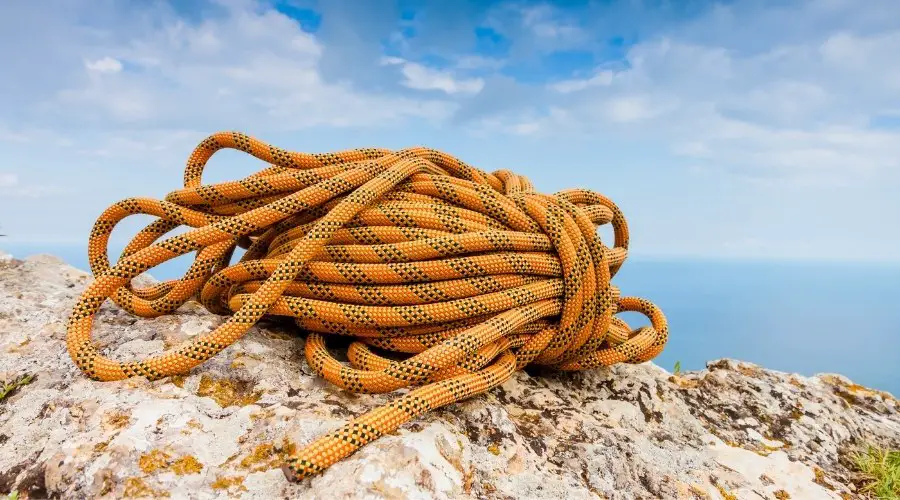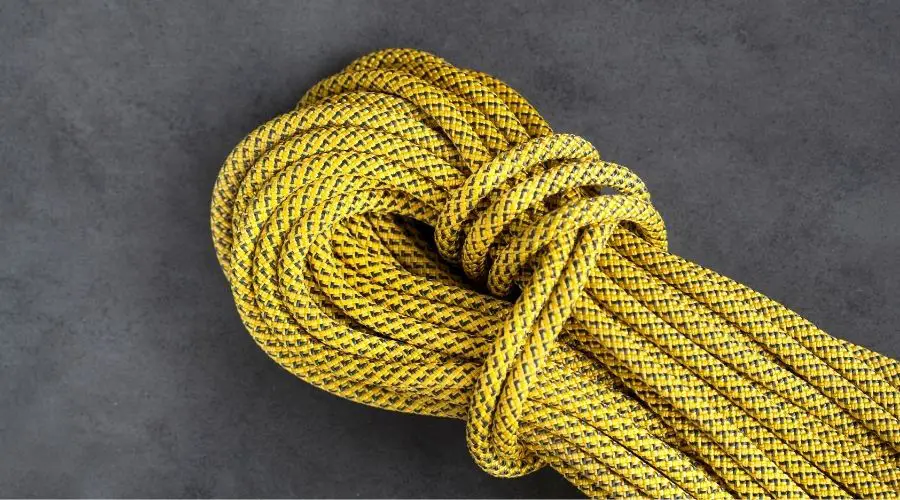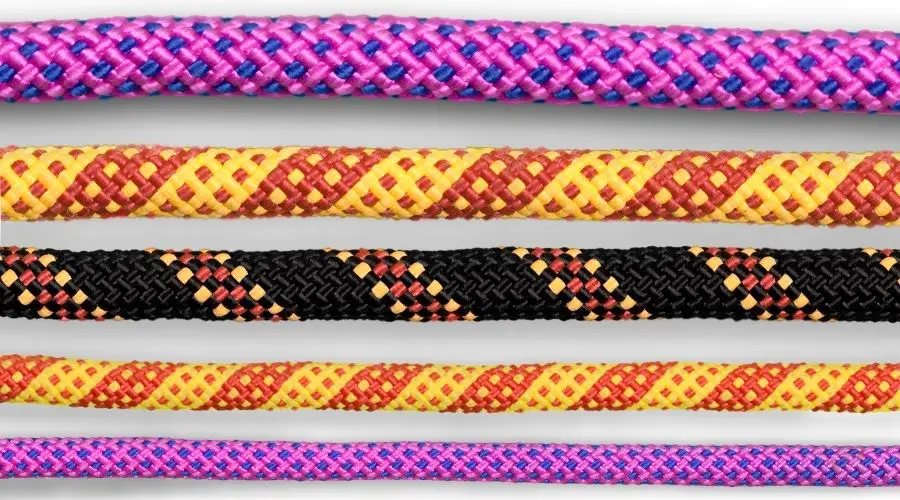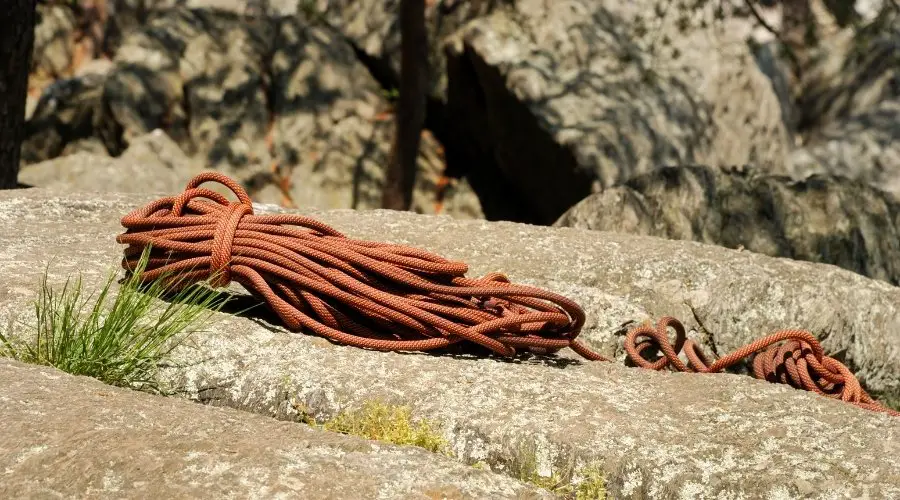Finding the right climbing rope can seem impossible – especially when it comes to picking out the right price point. This article lists some of the most popular climbing ropes at different costs.
On average, a single climbing rope costs between $100 and $380. Rope type, length, diameter, dry treatment, and performance all affect how much a climbing rope costs. As a general rule, long dry treated ropes will be more expensive than shorter non-dry treated ropes.
Price is not the only factor to consider when picking out a climbing rope. Just because one rope is more expensive than another does not mean it will be better for you. This article discusses what makes some ropes more expensive than others and will help you save money by avoiding unnecessary expenditures.
If you are wondering what the current prices are for the top selling ropes, you can check them out on Amazon here! (affiliate link)
15 Popular Single Climbing Ropes With Price
Lets face it, ropes are a must have for climbers who plan to do more than just bouldering. As such, most climbers will look at investing into ropes at some point in their climbing career. Climbing ropes can get a bit expensive because they are integral in keeping climbers alive. Below is a table detailing the diameter, length, and price of 15 popular climbing ropes.
| Climbing Rope | Diameter x Length | Price |
| PMI Summit Master (Non-Dry) | 10.2mm x 50m | $100 |
| Black Diamond (Non-Dry) | 9.8mm x 40m | $110 |
| Edelrid Boa Eco (Non-Dry) | 9.8mm x 60m | $170 |
| Black Diamond (Non-Dry) | 9.9mm x 60m | $180 |
| Mammut Crag We Care Classic (Non-Dry) | 9.5mm x 70m | $180 |
| Edelrid Boa Eco (Non-Dry) | 9.8mm x 70m | $190 |
| Black Diamond (Non-Dry) | 9.9mm x 70m | $200 |
| Mammut Crag Classic (Non-Dry) | 9.8mm x 70m | $200 |
| Edelrid Tommy Caldwell Pro DuoTec (Dry) | 9.6mm x 60m | $230 |
| Black Diamond (Non-Dry) | 9.4mm x 80m | $240 |
| Mammut Alpine (Dry) | 9.5mm x 60m | $250 |
| Edelrid Hummingbird Pro (Dry) | 9.2mm x 70m | $270 |
| Black Diamond Honnold Edition (Dry) | 9.4mm x 70m | $300 |
| Mammut Crag Duodess (Dry) | 9.5mm x 70m | $310 |
| Edelrid Tommy Caldwell Eco Dry CT | 9.3mm x 80m | $380 |
As you can see, there are multiple price points of climbing ropes. Cheaper 60 to 70 meter ropes cost between $170 and $200 while more expensive 60 to 70 meter ropes can be upwards of $300. Still, $170 to me feels like a lot of money to shell out for a rope. So how come they are priced so high?
Why Climbing Rope is So Expensive
Climbing rope is so expensive because it requires special materials and is scientifically engineered. Although it may not look like much, climbing rope is one incredible invention. Climbing ropes need to be durable, lightweight, stretch, strong, and pass vigorous safety standards. As a general rule, ropes are graded on fall rating, elongation (static and dynamic), and impact force.
Remember to only use ropes that are in good condition and meet the UIAA (International Climbing and Mountaineering Federation)) safety standards. If you are curious, you can check out the safety standards that ropes must pass at the UIAA website linked here.

What Increases Climbing Rope Cost
Many factors affect the price of climbing ropes. The main factors are rope type, length, diameter, and dry treatment.
Rope Type
The type of rope has a direct impact on its price. There are four main types of climbing ropes:
- Single Ropes – designed to be used alone, can be used in half and twin rope systems
- Half Ropes – a two rope system that is good for wandering routes
- Twin Ropes – a two rope system that is good for non-wandering routes
- Static Ropes – NOT designed for top rope or lead climbing, only used for rescue work/hauling loads
It will be much more expensive to run a half or twin rope system than a single rope one due to having to purchase two ropes. For the purposes of this article, we will be talking about single ropes exclusively. Single ropes are the most versatile of the four and the most widely purchased. They can be used for sport, trad, top rope, gym, and even big wall climbing.

Rope Length
In general, the cost of the rope increases with rope length assuming all other factors are the same. This is mainly due to the increased amount of material needed to make a longer rope.
A 60 to 70m rope will be sufficient for almost every climb. Keep in mind you need approximately twice the length of rope length than the pitch height to get back down safely. For example, if you are climbing a 28 meter high route, you will need at least 56 meters of rope to climb up and come back down safely.
Most climbing gyms walls will be much shorter than outside routes. Therefore, gym ropes are able to be shorter and still get the job done. As a general rule, a 40 to 50 meter rope should be sufficient for gym climbing. If you are unsure of the wall height, I recommend calling your climbing gym to make sure you get a long enough rope.
Rope Diameter
In general, the cost of rope increases with rope diameter assuming all other factors are the same. The common ranges of rope diameters are:
- 9.4mm and under – thin, good for multi-pitch climbs where weight is important
- Between 9.5mm and 9.8mm – standard, good for all-around use
- 9.9mm and over – thick, good for projecting and gym climbing
Thicker ropes are typically more durable and will last longer than slimmer ropes. On the flip side, slimmer ropes are much lighter than thicker ones. Choosing between weight and durability is often a choice climbers have to make with rope.

Dry Treatment
Non-dry ropes will absorb water and lose their effectiveness and potentially become dangerous to climb with. Typically a dry treated rope will be much more expensive than a non-dry rope. This is because the dry treatment process mitigates the amount of water the rope absorbs.
Dry treated ropes hold up substantially better to weather conditions than non-dry ropes. They are essential for multi-pitch trad and mountaineering because of this. However, they typically are a little overkill for the standard top rope and sport climber.
What Climbing Rope is Right For You
For the typical climber I usually recommend to go with a 70m non-dry rope that has a 9.8mm diameter. Ropes fitting this criteria will be long enough to climb every route at an average climbing crag and will be quite durable. Weight should not be a major issue for the average climber unless you are trying to climb as hard as absolutely possible. In which case, a thinner rope may be a better option.

While dry treated ropes hold up to weather conditions very well, I do not believe they are necessary for climbers who will not be subjecting themselves to those conditions on a frequent basis. Just be sure to take proper care of your non-dry rope and only climb when the conditions allow.
You can get a shorter climbing rope (40m) if you plan to do mainly gym climbing and shorter outside routes. This will save you a significant amount of money but will prohibit you from climbing significant amount of routes at various crags.
To find out what is my favorite climbing rope and what I believe to be the best bang for your buck check out recommended gear page linked here.
The Bottom Line
You are able to get a quality 70 meter non-dry rope for approximately $170 to $200. Opting for a dry rope will increase this cost to approximately $250 to $300. Dry treated ropes are much more expensive than non-dry ropes but they are able to withstand various weather conditions much better than non-dry ropes. If you are looking to mainly indoor gym climb, you will be able to save some money and get a shorter rope (40m).
